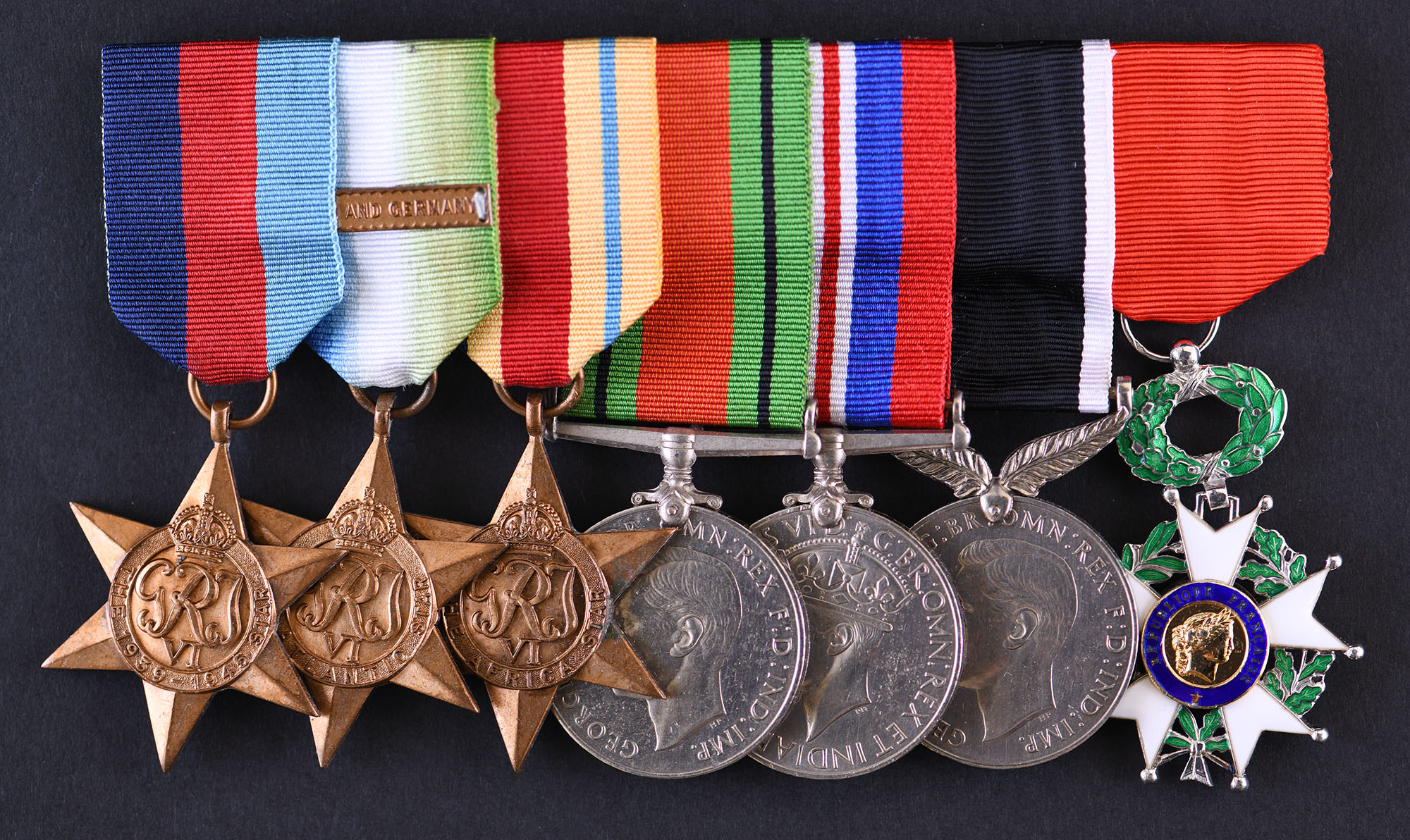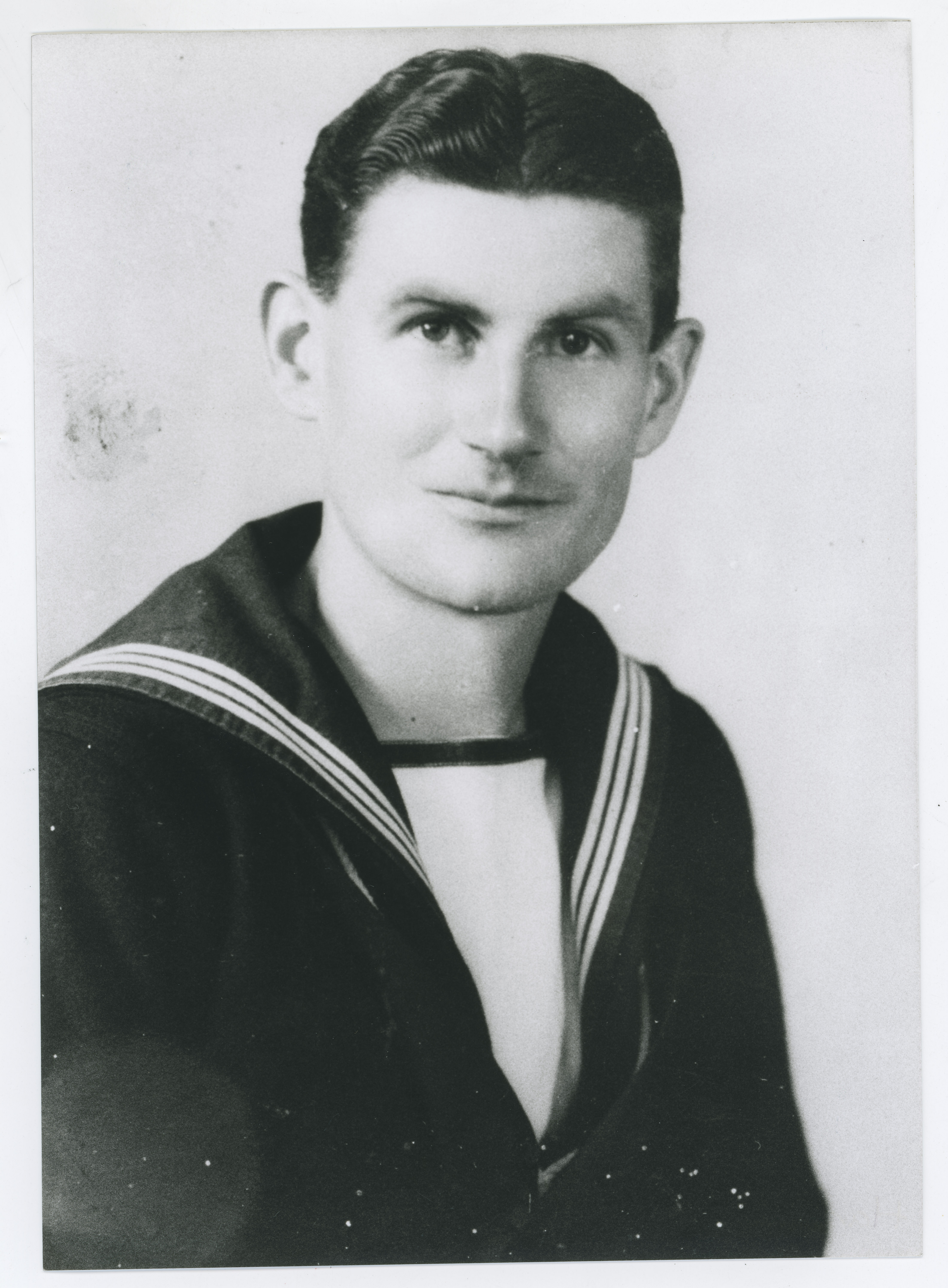

Display No. 20D
HARTON, Neil Wilfred
Neil Harton volunteered for naval service when the Second World War broke out and, in 1940, was accepted under ‘Scheme B’ – which trained men as ratings with a view to fast-tracking them to become officers – for service with the Royal Navy. After basic training in the UK, Harton served his sea-time aboard HMS Arethusa carrying out convoy protection patrols in the North Atlantic and Mediterranean. Following this Harton completed his officer training, being commissioned as a Temporary Sub-Lieutenant in August 1941.
Harton elected to join the Royal Navy Coastal Forces and, in September 1941, was posted to Motor Launch (ML) 303, escorting convoys in the North Sea along Britain’s East Coast. In February 1942 he was appointed First Lieutenant of Motor Gun Boat (MGB) 315 which was assigned to convoy patrols as well as being involved in combined operations off the French coast. MGB 315 evacuated commandos in the Bruneval Raid on the German radar installation in Northern France, as well taking part in the Dieppe Raid in August 1942. Harton’s MGB also rescued Canadian aircrew from a downed Halifax bomber in the North Sea; he was one of those who jumped into the icy waters to save the men.
In 1943 Harton trained in torpedo boats and took command of HM Motor Torpedo Boat (MTB) 630 in November. MTB 630 was part of the 55th MTB Flotilla which, in June 1944, led the Normandy invasion fleet across the Channel, engaging hostile vessels to allow the landing craft to approach the beaches. In 2015, Harton – along with other New Zealand veterans – was presented with the French Legion of Honour to mark his contribution to D-Day.
In late 1944 Harton, physically and mentally exhausted, returned to New Zealand on leave. He was discharged as Physically Unfit for Naval Service (PUNS) in 1945.
Awarded medal(s)
The 1939-1945 Star
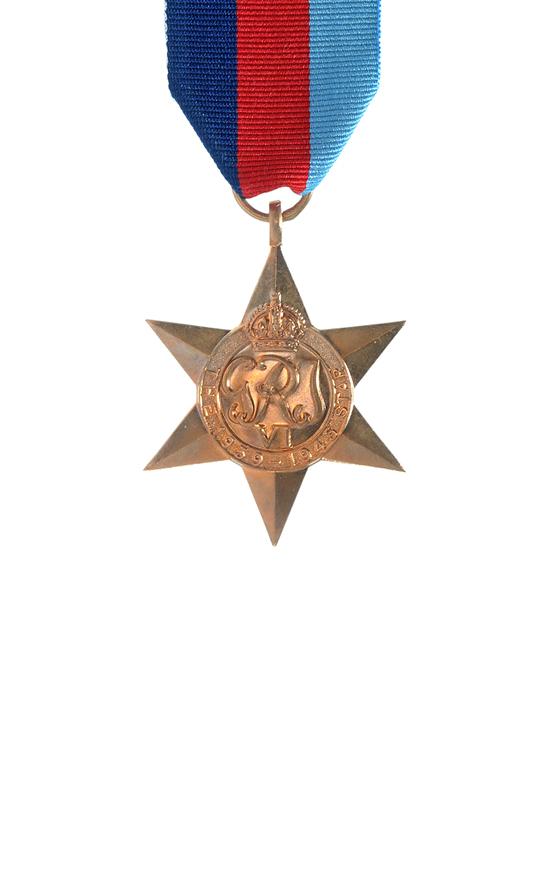
The 1939-45 Star is the first in a series of eight campaign stars instituted in 1945 to recognise service in World War Two. The ribbon has three equal vertical stripes of dark blue, red and light blue. The dark blue stripe symbolises the service of the Navy and the Merchant Navy, the red stripe symbolises the service of the Army, and the light blue stripe symbolises the service of the Air Force. The equal width bands represent the equal contributions of the three service arms towards victory. The ribbon was devised by King George VI. Two clasps could be awarded with this medal: ‘Battle of Britain’ and ‘Bomber Command’. Only aircrew would qualify for these clasps although a small number of Fleet Air Arm naval pilots flew for the air force and would be eligible for the ‘Battle of Britain’ clasp.
The Atlantic Star
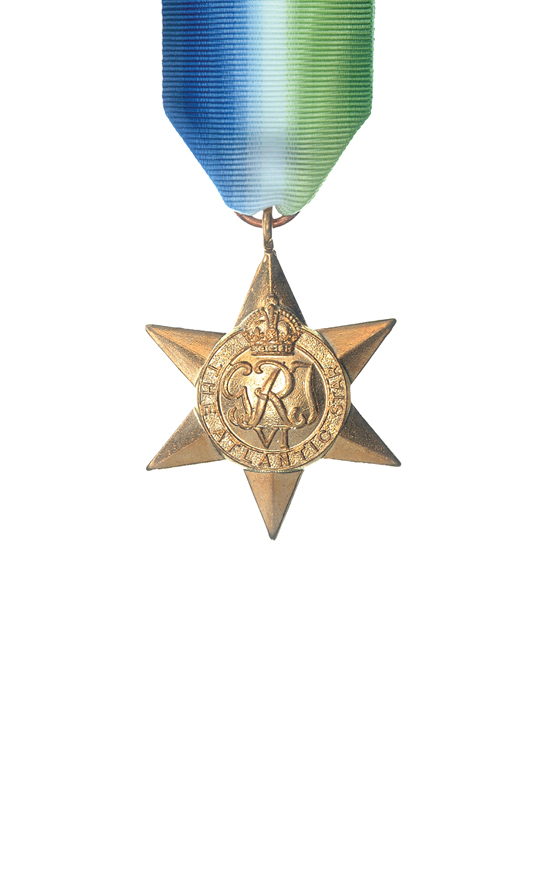
The Atlantic Star was awarded for service during the Second World War. It was instituted to commemorate the Battle of the Atlantic the longest continuous military campaign in the Second World War running from 3 September, 1939 – 8 May, 1945. Six months naval service or four months air service in the Atlantic, United Kingdom (‘home’) waters or North Russian waters was normally required. The ribbon is watered silk coloured blue, white and green, symbolising service in the oceans. Two clasps could be awarded with this medal: ‘France and Germany’ and ‘Air Crew Europe’. Personnel issued the Atlantic Star who then qualified for either the France and Germany and the Air Crew Europe Stars were awarded a clasp in respect of the second only (as only one clasp could be worn on the star).
The Africa Star
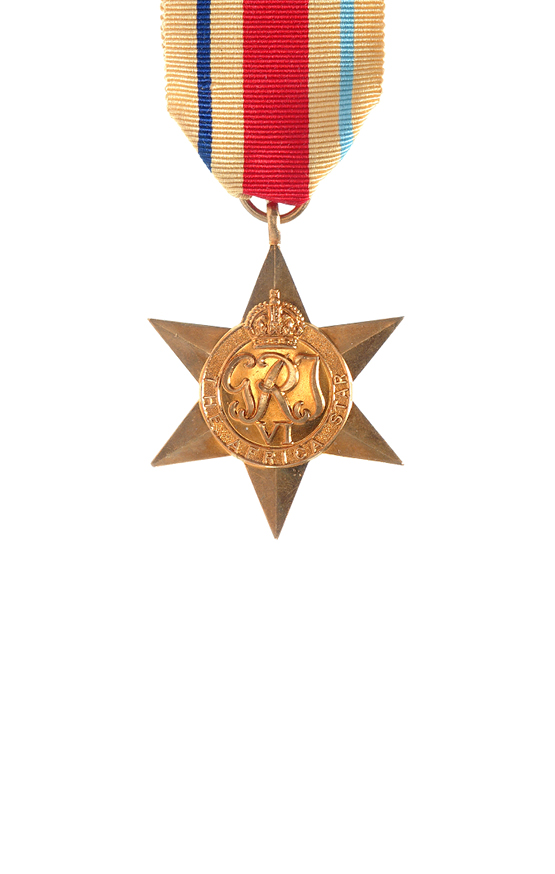
The Africa Star was awarded in the Second World War for service in North Africa between 10 June 1940 and 12 May 1943. The ribbon is pale buff in colour, with a central vertical red stripe, and narrower stripes, one dark blue and the other light blue. The pale buff background symbolises the desert, the central red stripe symbolises the Army, the dark blue stripe symbolises the Navy and Merchant Navy, and the light blue stripe symbolises the Air Force. Three clasps could be awarded with this medal: ‘North Africa 1942-43’, ‘8th Army’, and ‘1st Army’. Naval personnel could only qualify for the ‘North Africa 1942-43’ clasp – for in shore service.
The Defence Medal
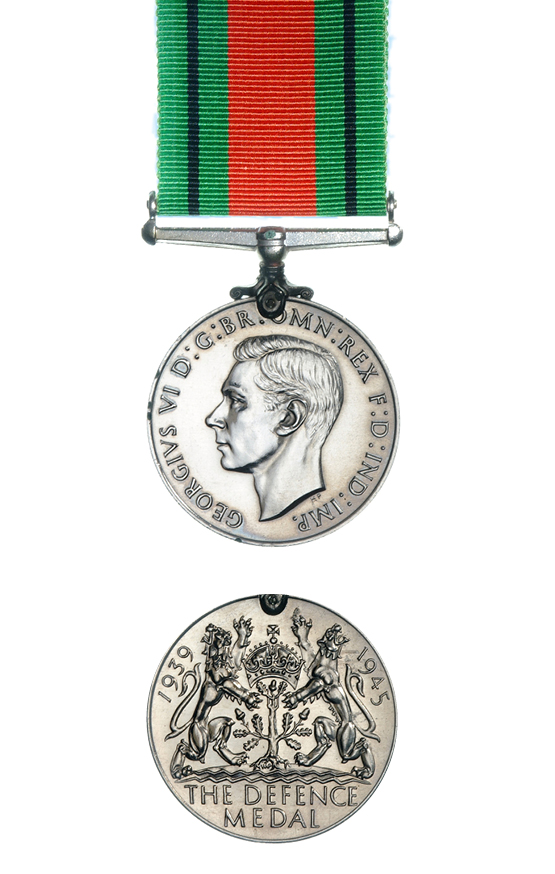
The Defence Medal was awarded to British and Commonwealth forces who served during the Second World War. It was awarded to New Zealand military personnel who served overseas in a non-operational area such as Great Britain, Palestine or Fiji. The ribbon’s flame-coloured orange centre band and green edge bands symbolise enemy attacks on Britain’s green and pleasant land. The narrow black stripes represent the black-outs against enemy air-attacks.
The War Medal 1939-1945
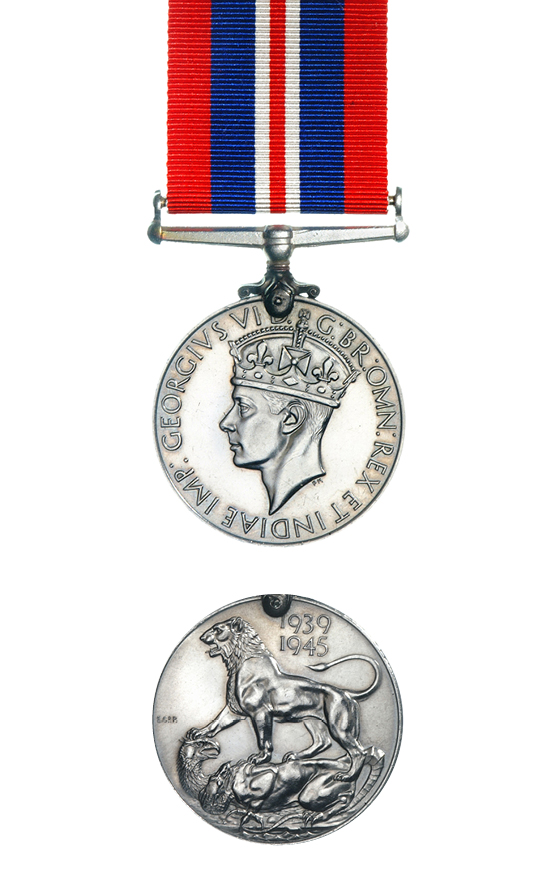
The War Medal 1939-45 was awarded across the British Commonwealth to all full-time members of the Armed Forces in the Second World War for 28 days service between 3 September 1939 and 2 September 1945, irrespective of where they were serving. The ribbon is the red, white, and blue of the (British) Union Flag. There is a narrow central red stripe with a narrow white stripe on either side. There are broad red stripes at either edge, the two intervening stripes being blue.
A bronze oak leaf on the medal ribbon denotes that the recipient was Mentioned in Despatches. To be Mentioned in Despatches a member of the armed forces had their name mentioned in an official report, written by a superior officer, and sent to a higher command. The report would describe the individual’s gallant or meritorious action in the face of the enemy.
The New Zealand War Service Medal
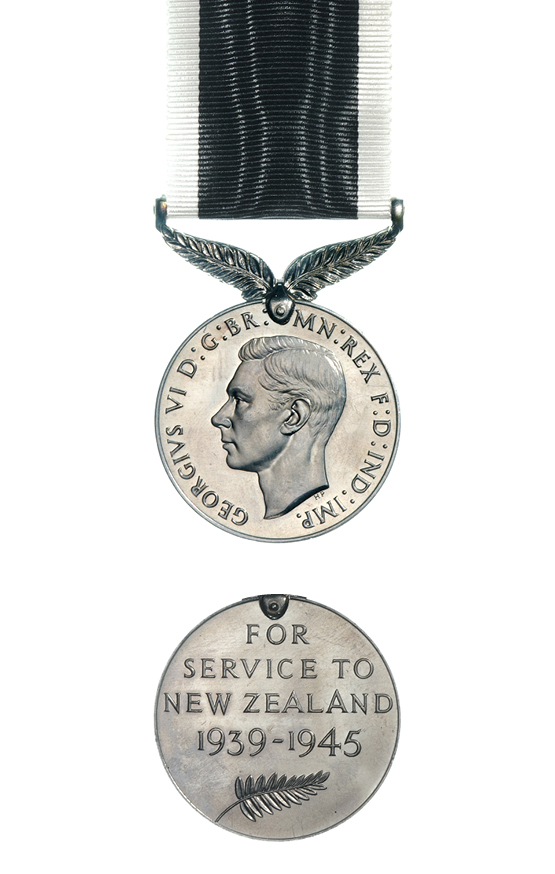
The New Zealand War Service Medal was awarded for 28 days’ full time service or six months’ part time service in the Second World War in any of the New Zealand Armed Forces including the Reserves, Naval Auxiliary Patrol Service, or Home Guard, between 3 September 1939 and 2 September 1945.
Legion of Honour (Legion d’Honneur)
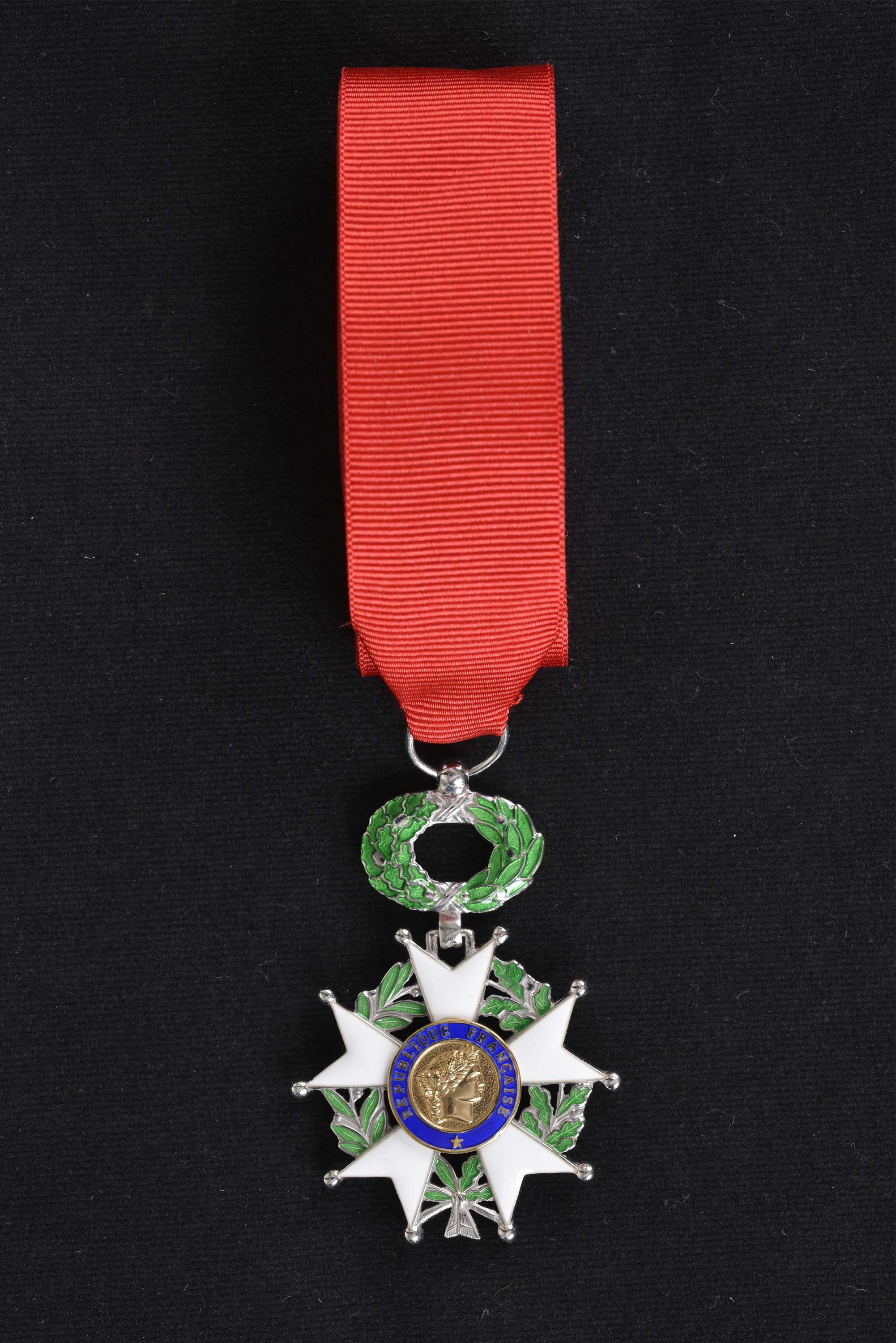
This is the highest French Order of Merit both military and civil. Established in 1802 by Napoleon Bonaparte, it is divided into five degrees of increasing distinction: Chevalier (Knight) Officier, Commandeur, Grand Officier and Grand Croix (Grand Cross).

